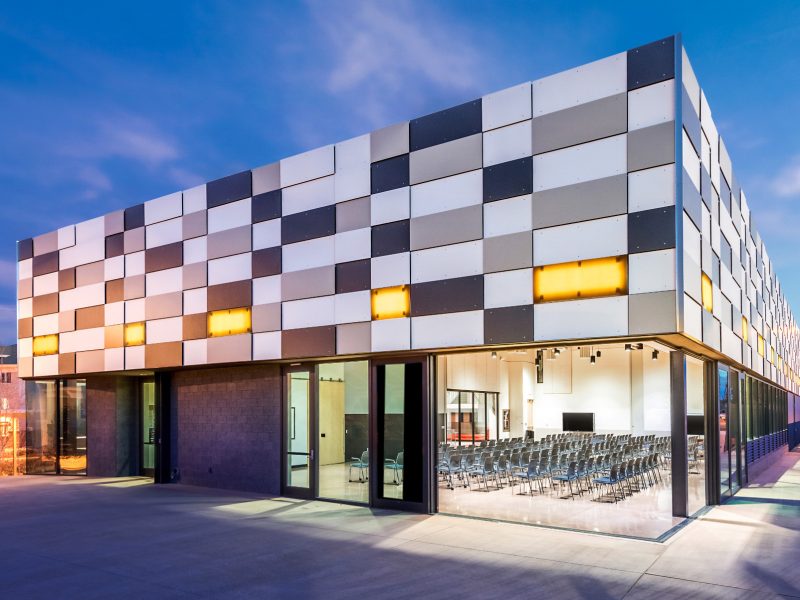The International Pavilion celebrates the diversity of every country and culture on Earth, forming bonds that lead to greater global understanding.

As the primary event center for NAU’s International House, the International Pavilion is a place where international students all over the university can feel at home. Events at the International Pavilion are open to the entire campus community, and it is also an event destination for greater Flagstaff on occasion.
Sustainability
Ventilation systems
Natural ventilation panels inside the walls allow cooler air to enter the building, while gravity hoods in the ceilings circulate hot air back outside. Large ceiling fans help to circulate indoor air. In addition, an air handler unit distributes heat when needed, and an evaporative cooling system provides heat relief.
Solar use
35-kilowatt solar panels line the roof, generating power for the pavilion. Solar tubes provide natural light to numerous indoor spaces, reducing the energy used for artificial lighting. Additionally, thermal windows use the power of sunlight to provide warmth when needed.
Radiant heating
Hot water pipes run underfoot, creating naturally heated flooring. In the pavilion’s auditorium, guests enjoy a full visual of the operation system for radiant heating through visible manifolds installed in the walls.
Water use
Using a roof draining system, the pavilion benefits from a filtration pond that collects and redistributes precipitation. Motion-sensing water faucets, along with low-flow toilets and sinks, combine with the roof system to reduce water use in the building by 42 percent.
Energy use
Motion activation, solar power, and energy-efficient lightbulbs combine to reduce energy waste from lights. Foam insulation and double-paned windows equipped with argon gas reinforce the building’s natural climate control capabilities with no extra energy use. These aspects reduce the building’s energy use by 54 percent.
Recycled materials
During construction, any unused materials or demolition debris were recycled appropriately.

